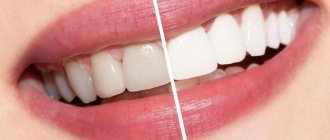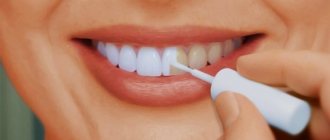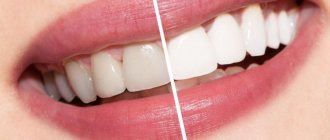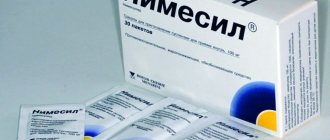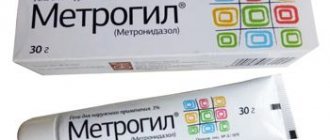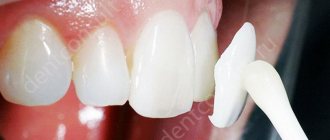In the article we will look at the instructions for use of Tsiprolet drops.
Are they ear or eye? Let's figure it out.
This is an antibiotic intended for local use and showing increased activity against many pathogenic microorganisms. "Tsiprolet" is prescribed to eliminate the inflammatory process in the eyes caused by harmful bacteria. The drug is low-toxic, which makes it possible to prescribe drops to children over the age of one year. This antibiotic is relatively safe and rarely causes adverse reactions, especially when applied topically. In general, the drug is intended for the eyes. But Tsiprolet drops are also used in the ears.
pharmachologic effect
Is Tsiprolet an antibiotic or not? Yes, Tsiprolet is an antibiotic . The main component is ciprofloxacin. The active component is a fluoroquinolone derivative. The mechanism of action is aimed at suppressing DNA gyrase of the bacterial cell, which leads to disruption of DNA synthesis , slowing down the processes of growth and reproduction of microbes. As a result of pronounced morphological changes under the influence of the antibacterial agent Tsiprolet, the microbial cell dies. The bactericidal effect manifests itself during the period of division and dormancy of gram-negative microorganisms. In relation to gram-positive flora, the bactericidal effect is manifested only during division. The cells of the macroorganism do not contain DNA gyrase, which completely eliminates the toxic effect on the human body. The drug does not cause resistance to other antibacterial drugs. Tsiprolet is active against aerobic flora, enterobacteria, gram-negative flora, chlamydia, listeria, mycobacterium tuberculosis, yersinia, campylobacteria, protea, mycoplasma, etc. The drug does not have a bactericidal or bacteriostatic effect on Treponema pallidum (the causative agent of syphilis ).
Indications for use of Tsiprolet
Tsiprolet tablets - what are they for? The drug is prescribed for bacterial lesions of the respiratory system ( cystic fibrosis , bronchitis, bronchiectasis, pneumonia, tonsillitis), ENT organs ( tonsillitis , pharyngitis , otitis media, mastoiditis, sinusitis, sinusitis), genitourinary system (salpingitis, cystitis, pyelonephritis , oophoritis, tubular abscess, adnexitis, prostatitis, gonorrhea, chlamydia , soft chacks , pelivioperitonitis, pelitis), digestive system (peritonitis, typhoid typhoid, salmonellosis, intra -abscesses, yersiniosis , campilobacteriosis , cholera , shigellosis), skin (phlegmon, abscess, abscess, abscess, abscess, abscess, abscess, abscess, abscess, abscess, abscess. Guy, infected ulcers, wounds), osteo-articular system (sepsis, septic arthritis, osteomyelitis ).
What else does Tsiprolet help with? The drug is prescribed for the prevention of infectious lesions after surgery.
Tsiprolet eye drops have the following indications for use: conjunctivitis, blepharitis, stye.
Indications
The drug in the form of drops is prescribed for the treatment of infectious and inflammatory eye diseases, including:
- Conjunctivitis in acute and subacute forms.
- Blepharoconjunctivitis and blepharitis.
- Ulcerative lesion of the cornea of the eye of bacterial origin.
- Chronic dacryocystitis and meibomitis.
The list of indications for Tsiprolet eye drops is quite extensive.
In addition, the product is used as a preparatory step before surgical manipulations on the eye in order to prevent infectious complications. Drops are also prescribed after surgery. The drug is also included in complex therapy if complications arise after injury to the eye or a foreign body entering it.
We have reviewed the indications for Tsiprolet drops. Let's find out what contraindications they have.
Contraindications
Contraindications for the drug are as follows. Ciprolet is not prescribed in pediatric practice until adulthood (formation of the skeletal system, skeleton), in case of intolerance to ciprofloxacin, pregnancy, or during breastfeeding. In case of cerebrovascular accident, atherosclerosis of cerebral vessels, epileptic syndrome , epilepsy, mental disorders, severe pathology of the liver, kidneys, elderly people are prescribed after consultation with specialists.
Side effects
Digestive tract: vomiting, diarrhea syndrome, flatulence, epigastric pain, nausea, bloating , cholestatic jaundice , decreased appetite, hepatonecrosis, hepatitis.
Nervous system: insomnia, dizziness, anxiety, fatigue, peripheral paralgesia , nightmares, tremors of the extremities, increased intracranial pressure, increased sweating, hallucinations, depression, confusion, various psychotic reactions, thrombosis of the cerebral arteries , fainting, migraine.
Sense organs: hearing loss, tinnitus, taste disturbances, diplopia. Possible development of tachycardia , drop in blood pressure, heart rhythm disturbances, development of anemia, granulocytopenia, leukocytosis.
Genitourinary system: polyuria, dysuria, glomerulonephritis, crystalluria, hematuria, interstitial nephritis, impaired nitrogen excretory function of the kidneys.
Tsiprolet can provoke an allergic response, urticaria, arthralgia , tenosynovitis, arthritis and other side effects.
Instructions for use of Tsiprolet (Method and dosage)
Let's look at how to take the drug.
Tsiprolet tablets, instructions for use
The medicine is taken orally 2-3 times a day, 250 mg; in case of severe disease, the dosage is increased to 0.5-0.75 grams.
Infections of the genitourinary system: twice a day, 0.25-0.5 grams for 7-10 days.
Uncomplicated gonorrhea: once 0.25-0.5 grams.
Gonococcal infection together with mycoplasmosis, chlamydia: 0.75 grams every 12 hours, course – 7-10 days.
Chancroid: Tsiprolet 500 mg twice daily.
The drug in tablets is swallowed completely, washed down with liquid.
Tsiprolet eye drops, instructions for use
Apply 1-2 drops of the product every 4 hours. If the lesion is severe, drop 2 drops every hour. As you recover, you can limit your antibiotic intake in dosage and frequency.
Some doctors believe that drops can be used as ear drops. However, it should be borne in mind that this is not their direct purpose. It must be remembered that these are eye drops.
Instructions for injections of the solution
Intravenous administration is carried out by drip of 0.2 grams over half an hour.
Therapy for osteomyelitis takes about 2 months.
Chronic carriage of salmonella: 0.2 grams twice a day, course 4 weeks.
After intravenous infusions, they switch to taking the tablet form.
Tsiprolet eye drops
INSTRUCTIONS for the use of the medicinal product for medical use
CIPROLET®
Registration number: P N 012765/01 Trade name of the drug: Ciprolet® International nonproprietary name of the drug: ciprofloxacin. Chemical name: 4-oxo-7-(piperazin-1-yl)-6-fluoro-1-cyclopropyl-1,4-dihydroquinoline-3-carboxylic acid hydrochloride monohydrate Dosage form: eye drops
Composition 1 ml of solution contains: Active ingredient: ciprofloxacin hydrochloride (equivalent to 3.0 mg of ciprofloxacin) - 3.49 mg/ml. Excipients: disodium edetate 0.50 mg, sodium chloride 9.00 mg, benzalkonium chloride 50% solution 0.0002 ml, hydrochloric acid 0.000034 mg, water for injection up to 1.0 ml.
Description Transparent, colorless or light yellow solution.
Pharmacotherapeutic group: antimicrobial agent, fluoroquinolone.
ATX code: S01AX13
Pharmacological action Pharmacodynamics A broad-spectrum antimicrobial agent, a fluoroquinolone derivative, suppresses bacterial DNA gyrase (topoisomerases II and IV, responsible for the process of supercoiling of chromosomal DNA around nuclear RNA, which is necessary for reading genetic information), disrupts DNA synthesis, growth and division of bacteria; causes pronounced morphological changes (including cell wall and membranes) and rapid death of the bacterial cell. It has a bactericidal effect on gram-negative organisms during the period of rest and division (since it affects not only DNA gyrase, but also causes lysis of the cell wall); it acts on gram-positive microorganisms only during the period of division. Low toxicity for the cells of the macroorganism is explained by the absence of DNA gyrase in them. While taking ciprofloxacin, there is no parallel development of resistance to other antibiotics that do not belong to the group of DNA gyrase inhibitors, which makes it highly effective against bacteria that are resistant, for example, to aminoglycosides, penicillins, cephalosporins, tetracyclines and many other antibiotics. Gram-negative aerobic bacteria are sensitive to ciprofloxacin: enterobacteria (Escherichiacoli, Salmonellaspp., Shigellaspp., Citrobacterspp., Klebsiellaspp., Enterobacterspp., Proteusmirabilis, Proteusvulgaris, Serratiamarcescens, Hafniaalvei, Edwardsiellatarda, Providencia spp., Morganellamorganii, Vibriospp. , Yersiniaspp.), others gram-negative bacteria (Haemophilus spp., Pseudomonasaeruginosa, Moraxellacatarrhalis, Aeromonasspp., Pasteurellamultocida, Plesiomonasshigelloides, Campylobacterjejuni, Neisseriaspp.), some intracellular pathogens - Legionellapneumophila, Brucellaspp., Chlamydiatrachomatis, Listeria monocytogenes, Mycobacterium tuberculosis, My cobacteriumkansasii, Corynebacteriumdiphtheriae; gram-positive aerobic bacteria: Staphylococcus spp. (Staphylococcus aureus, Staphylococcus haemolyticus, Staphylococcus hominis, Staphylococcus saprophyticus), Streptococcus spp. (Streptococcus pyogenes, Streptococcus agalactiae). Most staphylococci resistant to methicillin are also resistant to ciprofloxacin. The sensitivity of Streptococcus pneumoniae, Enterococcus faecalis, Mycobacterium avium (located intracellularly) is moderate (high concentrations are required to suppress them). The following are resistant to the drug: Bacteroides fragilis, Pseudomonas cepacia, Pseudomonas maltophilia, Ureaplasma urealyticum, Clostridium difficile, Nocardia asteroides. Not effective against Treponema pallidum. Resistance develops extremely slowly, since, on the one hand, after the action of ciprofloxacin there are practically no persistent microorganisms left, and on the other hand, bacterial cells do not have enzymes that inactivate it.
Pharmacokinetics The maximum concentration of the drug (Cmax) in plasma when using eye drops is less than 5 ng/ml. The average concentration is below 2.5 ng/ml. After instillation, systemic absorption of the drug is possible. The drug is excreted through the kidneys mainly unchanged (50%) in the form of metabolites (up to 10%), about 15% is excreted through the intestines, and in nursing mothers it passes into breast milk.
Indications for use Local treatment of various infectious diseases of the eye and its appendages caused by bacteria sensitive to the drug: acute and subacute conjunctivitis, blepharoconjunctivitis, blepharitis, bacterial corneal ulcers, bacterial keratitis and keratoconjunctivitis, chronic dacryocystitis and meibomitis. Preoperative prophylaxis in ophthalmic surgery. Treatment of postoperative infectious complications. Treatment and prevention of infectious complications of the eyes after injuries or foreign bodies.
Contraindications: Hypersensitivity to ciprofloxacin and other quinolone drugs, viral keratitis, pregnancy, lactation (breastfeeding), children (up to 1 year).
with caution in patients with cerebral atherosclerosis, cerebrovascular accident, and convulsive syndrome.
Method of administration and dosage Locally. For mild and moderately severe infections, instill 1-2 drops into the conjunctival sac of the affected eye every 4 hours, for severe infections - 2 drops every hour. After the condition improves, the dose and frequency of instillations are reduced. For bacterial corneal ulcers: 1 drop every 15 minutes for 6 hours, then 1 drop every 30 minutes during waking hours; on day 2 – 1 drop every hour during waking hours; from days 3 to 14 – 1 drop every 4 hours during waking hours. If after 14 days of therapy epithelialization has not occurred, treatment can be continued.
Side effects Allergic reactions, itching, burning, mild soreness and hyperemia of the conjunctiva, nausea, rarely - swelling of the eyelids, photophobia, lacrimation, sensation of a foreign body in the eyes, unpleasant taste in the mouth immediately after instillation, decreased visual acuity, the appearance of a white crystalline precipitate in patients with corneal ulcer, keratitis, keratopathy, corneal infiltration, development of superinfection.
Overdose There are no data on overdose of the drug when applied topically. If the drug is accidentally taken orally, there are no specific symptoms. Nausea, vomiting, diarrhea, headache, fainting, and anxiety may occur. Treatment: standard emergency measures, adequate fluid intake, acidification of urine to prevent crystalluria.
Interaction When combined with other antimicrobial drugs (beta-lactam antibiotics, aminoglycosides, clindamycin, metronidazole), synergism is usually observed; can be successfully used in combination with azlocillin and ceftazidime for infections caused by Pseudomonas spp.; with mezlocillin, azlocillin and other beta-lactam antibiotics - for streptococcal infections; with isoxazolepenicillins and vancomycin - for staphylococcal infections; with metronidazole and clindamycin - for anaerobic infections. Ciprofloxacin solution is pharmaceutically incompatible with drugs with a pH value of 3-4 that are physically or chemically unstable.
Special instructions Eye drops can only be used topically; the drug cannot be administered subconjunctivally or into the anterior chamber of the eye. When using Tsiprolet® eye drops and other ophthalmic solutions, the interval between their administrations should be at least 5 minutes. During treatment with the drug, wearing contact lenses is not recommended. Patients who temporarily lose clarity of vision after application are not recommended to drive a car or work with complex machinery, or any complex equipment that requires clarity of vision, immediately after instillation of the drug.
Release form: Eye drops 3 mg/ml. 5 ml of the drug in a plastic dropper bottle with a screw cap. 1 bottle is placed in a cardboard box along with instructions for use.
Storage conditions List B. In a dry place, protected from light, at a temperature not exceeding 25°C. Do not freeze. Keep out of the reach of children!
Shelf life 2 years. Use the drug within 1 month after opening the bottle. Do not use after the expiration date stated on the packaging.
Conditions for dispensing from pharmacies By prescription.
Manufacturer Dr. Reddy's Laboratories Ltd. Hyderabad, Andhra Pradesh, India.
Manufacturing Location Plot No.2, Sudarshanpur Industrial Estate, Bais Godam, Jaipur 302006, SP-918, Phase III, Industrial Estate, Bhiwadi District, Alwar, India.
Address for sending claims: Representative office 115035, Moscow, Ovchinnikovskaya embankment, 20, building 1 tel., 783-29-01; Fax
Interaction
Tsiprolet extends the half-life, increases the concentration of indirect anticoagulants , oral hypoglycemic drugs due to a decrease in the activity of microsomal oxidation in liver cells and hepatocytes. Ciprofloxacin reduces the prothrombin index . Combination with other antibacterial agents leads to synergy. Tsiprolet is effectively used in conjunction with azlocillin, ceftazidime , beta-lactams, isoxazolepenicillins, vancomycin , clindamycin, metronidazole. The drug increases the nephrotoxicity of cyclosporine and increases serum creatinine levels. NSAIDs, except acetylsalicylic acid , can cause seizures. The infusion solution is incompatible with pharmaceutical infusion solutions. It is unacceptable to mix solutions for intravenous infusions with solutions whose pH exceeds 7.
Properties
This substance has a pronounced antibacterial effect and affects many pathogenic microorganisms. The spectrum of action of ciprofloxacin is quite wide. The substance has no analogues in nature and is not an antibiotic in the full sense of the word, as it differs in chemical composition. The drug is prescribed for the treatment of infectious pathologies caused by infection with gram-negative or gram-positive bacteria.
The use of Tsiprolet drops is advisable in cases where pathogens of the pathological process demonstrate resistance to other antibacterial substances. When used topically, it is possible to prevent immunological adverse reactions to the drug.
The effectiveness of the drug is due to the inhibition of the synthesis of topoisomerase, a bacterial enzyme responsible for the production of DNA. As a result, the cell of the pathogenic microorganism ceases to function normally and dies.
The bactericidal effect of the drug is ensured both at the stage of active bacterial growth and at rest. Another important property of ciprofloxacin is that when used simultaneously with other antibiotics, bacteria do not have the opportunity to develop resistance to them. That is, “Tsiprolet” is especially effective in combination with other antibacterial agents, such as aminoglycosides, penicillins, cephalosporins and tetracyclines.
In what other cases is the use of Tsiprolet eye drops indicated?
special instructions
Monitoring of blood pressure, heart rate, and ECG is required with the simultaneous administration of general anesthesia drugs (barbituric acid derivatives) and ciprofloxacin. Exceeding the daily dosage may lead to crystalluria . Tsiprolet affects transport control and concentration. For patients with organic brain lesions, vascular pathology, epilepsy, or a history of seizures, the drug Tsiprolet is prescribed in exceptional cases, for “vital” indications. Before antibacterial therapy, it is necessary to exclude pseudomembranous colitis . Treatment is stopped at the first signs of tendovaginitis , the appearance of pain in the tendons. It is important to avoid sun exposure during treatment.
There is no article on the drug on Wikipedia; the online encyclopedia contains only information about the active ingredient ciprofloxacin.
Analogues of Tsiprolet
Level 4 ATX code matches:
Dancil
Oftadek
Signitsef
Oftaquix
Vitabact
Okomistin
Analogues of Tsiprolet in composition are the following drugs: Alox , Floximed , Ciloxan , Ciproxol , Tsipromed , Tsipropharm , Ciprofloxacin , Tsifran , Tsiprol , Cipronate , Ificipro , Medociprin and others.
Are Tsiprolet and Tsifran the same thing?
Tsifran is an analogue of the drug in terms of the active substance.
Reviews about Tsiprolet
Reviews of Tsiprolet tablets
In general, the drug, of course, helps, since it is an antibiotic. However, it is worth remembering that it is for this reason that it should be taken only in extreme cases, so as not to harm health, especially in doses exceeding 500 mg. In particular, the annotation says that you should not take Tsiprolet before reaching adulthood, as this can negatively affect the skeleton. There are also reviews on the Internet about the side effects of this drug, such as weakness, dizziness, and difficulty breathing.
The drug is successfully taken for cystitis, but it is not recommended to stay in the sun for a long time while taking this antibiotic.
Reviews of Tsiprolet eye drops
Effective for conjunctivitis, blepharitis, stye. The drops are inexpensive.
Use for otitis media
What else does the Tsiprolet instruction tell us?
Ear drops are widely used in the practice of otolaryngologists for the treatment of otitis media. As a rule, they are prescribed if other antibacterial substances are ineffective. The solution for instillation is sterile, which allows it to be instilled into the ears as prescribed by a doctor. Tsiprolet ear drops are prescribed for the treatment of otitis media of the middle ear and external type, as well as complications of an inflammatory and infectious nature during the recovery period after surgery.
When prescribing a drug for the treatment of otitis, you should take into account the fact that Tsiprolet ear drops have certain contraindications. The dosage is determined by the doctor depending on the form and course of the pathological process. The duration of use is also prescribed by a specialist.
For mild otitis, 1-2 Tsiprolet ear drops are instilled into the affected ear, and the procedure is repeated every four hours. In the case of an acute course, the interval between instillation should be one hour until positive dynamics and improvement in the patient’s condition occur. Next, the treatment is adjusted. The duration of therapy is 7-10 days, but in exceptional cases the specialist may decide to prolong treatment up to one month.
In childhood, the dosage and frequency of use of Tsiprolet ear drops is also determined by the doctor depending on the nature and form of the pathological process. It is not recommended to complete treatment on your own, as this may affect the child’s immune system. The course must be completed in full, strictly as prescribed by the doctor.
Tsiprolet price, where to buy
The price of Tsiprolet in tablets of 500 mg is 110 rubles per pack of 10 pieces.
The price of 250 mg tablets is approximately 55 rubles per pack.
The price of Tsiprolet in eye drops is 60 rubles.
You can always check the current cost of an antibiotic in online pharmacies, for which you can use our selection below. How much the drug costs depends on the country.
- Online pharmacies in RussiaRussia
- Online pharmacies in UkraineUkraine
- Online pharmacies in KazakhstanKazakhstan
ZdravCity
- Ciprolet tablets p.p.o.
500mg 10 pcs.Dr. Reddy's lab. 112 rub. order - Tsiprolet eye drops 3mg/ml 5mlDr. Reddy's lab.
56 RUR order
- Ciprolet tablets p.p.o. 250mg 10 pcs.Dr. Reddy's lab.
57 RUR order
- Tsiprolet A tablets p.p.o. 500mg+600mg 10pcsDr. Reddy's lab.
220 rub. order
Pharmacy Dialogue
- Tsiprolet 500 tablets p/o 500 mg No. 10Dr. Reddy's
98 RUR order
- Tsiprolet ch. drops (5ml bottle)Dr. Reddy's
58 RUR order
- Tsiprolet 250 tablets p/o 250 mg No. 10Dr. Reddy's
59 RUR order
- Tsiprolet A tablets 500mg+600mg No. 10Dr. Reddy's
RUB 205 order
- Tsiprolet Ch. drops (head drops 3 mg/ml 5 ml)Dr. Reddy's
56 RUR order
show more
Pharmacy24
- Ciprolet 500 mg No. 10 tablets Dr. Reddy's Laboratories Ltd., India
82 UAH.order - Ciprolet 25 mg N10 tablets Dr. Reddy's Laboratories Ltd., India
53 UAH order
- Ciprolet A N10 tablets Dr. Reddy's Laboratories Ltd., India
147 UAH order
PaniPharmacy
- Tsiprolet tablets Tsiprolet tablets, film-coated 250 mg No. 10 India, Dr. Reddy's
58 UAH order
- Tsiprolet A tablets Tsiprolet A tablet. No. 10 India, Dr. Reddy's
161 UAH order
- Tsiprolet tablets Tsiprolet film-coated tablets 500 mg No. 10 India, Dr. Reddy's
107 UAH order
show more
The role of antibiotics in the complex therapy of external bacterial otitis
Inflammatory ear diseases are one of the most pressing problems in otorhinolaryngology. In outpatient settings, the proportion of patients with various forms of otitis reaches 38%, while the proportion of patients with external otitis, on average, is 50% [3, 7]. The incidence of various diseases of the outer ear tends to increase. This is due to the adverse effects of the environment, the widespread and uncontrolled use of medications that cause immunological changes in the body, and an increase in the number of patients with an allergic background. According to epidemiological data, 65% of dermatitis of the external auditory canal is caused by bacterial flora, and the leading pathogen in this group remains Pseudomonas aeruginosa, which accounts for up to 38% of the total structure of otitis pathogens [1, 5]. Sometimes Pseudomonas aeruginosa is found in combination with other microorganisms: E.coli, P.vulgaris, S.aureus and rarely - fungi. With otitis externa, the skin of the external auditory canal and the periosteum lying directly under the skin are affected. The disease is usually accompanied by ear pain, decreased hearing acuity, itching and purulent discharge. The diagnosis is based on the presence of typical signs of diffuse inflammation of the skin of the external auditory canal, which sometimes extends to the eardrum. The process has an acute or chronic course with exacerbations.
In some cases, external otitis caused by Pseudomonas aeruginosa can take a malignant course and develop into pseudomonas osteomyelitis of the temporal bone. At first, this is a sluggish process with rather minor manifestations (for example, discharge from the ear, inflammation of the skin of the external auditory canal). But if left untreated, the infection progresses, spreading to the ear, scalp and parotid salivary gland. Subsequently, the lesion affects the middle and inner ear, which can lead to the development of meningitis and otogenic brain abscesses [2].
Therapy for external otitis is prescribed taking into account the clinical picture and the nature of the pathogenic microflora. In uncomplicated cases, it is sufficient to prescribe a short course of local composite drugs containing antibacterial drugs and glucocorticosteroids. For patients with moderate and severe disease - with an increase in body temperature, spread of the inflammatory process beyond the auditory canal, in the presence of regional lymphadenopathy, if there is suspected spread of infection to the middle ear or signs of necrotization of the process, as well as in the case of a protracted course, the use of systemic antibiotic therapy is recommended [ 6].
When prescribing antibiotic therapy, one should take into account the fact that the doctor can obtain information about the composition of the microbial flora only 4–6 days after the patient’s application based on the results of a bacteriological study. Therefore, to achieve the desired effect when empirically prescribing therapy, preference is given to antimicrobial drugs (AMPs) that have a broad spectrum of action and are active against most possible pathogens of these conditions and, in particular, P. aeruginosa. That is why, in case of external otitis, characterized by an unfavorable, malignant course, it is necessary to promptly prescribe AMPs, which include, first of all, antipseudomonas cephalosporins (ceftazidime, cefepime) and fluoroquinolones (ciprofloxacin). In some cases, in the presence of highly reactive processes, as well as in the absence of effect on the second or third day of therapy, aminoglycosides (gentamicin, etc.) are prescribed. All of these AMPs are usually administered in high doses subject to intravenous administration; the duration of therapy is up to 4 weeks or more. Once the condition has stabilized, it is possible to switch to oral therapy with tablet forms of ciprofloxacin [4].
One of these drugs is Ciprolet (ciprofloxacin), an antimicrobial drug from the fluoroquinolone group. In laboratory conditions, ciprofloxacin exhibits activity against a wide range of gram-negative and gram-positive microorganisms. The bactericidal activity of ciprofloxacin is due to the ability to inhibit enzymes necessary for replication, transcription, repair and recombination of bacterial DNA. An important advantage of ciprofloxacin, based on its mechanism of action, is that it has a bactericidal effect on gram-negative microorganisms not only in the division phase, but also in the resting phase, while penicillins, cephalosporins and aminoglycosides act only on reproducing bacteria. This property of ciprofloxacin ensures its high clinical effectiveness in the treatment of chronic and localized infections. Ciprofloxacin is rightfully considered one of the most powerful antibacterial drugs acting on “problem” microorganisms - Staphylococcus aureus (including some methicillin-resistant strains) and P. aeruginosa (including multidrug-resistant strains). In terms of activity against P.aeruginosa, ciprofloxacin is comparable to meropenem and the most effective third-generation antipseudomonas cephalosporin, ceftazidime, and is the drug of choice for the treatment of infection caused by P.aeruginosa. And, which is very important in clinical practice, ciprofloxacin exhibits high activity against multiresistant strains of microorganisms. The sensitivity of P. aeruginosa to ciprofloxacin (including strains isolated from the ear) in outpatients is up to 93.7%. At the same time, ciprofloxacin has high bioavailability, which makes it indispensable for the treatment of a number of infections of all degrees of severity in all tissues.
The purpose of the scientific research conducted on the basis of the Moscow Scientific and Practical Center of Otorhinolaryngology named after L.I. Sverzhevsky" DZM, was the study and assessment of clinical and microbiological effectiveness, tolerability and determination of the optimal duration of treatment with AMP Tsiprolet in the complex therapy of bacterial otitis externa (EBO). Materials and methods. When carrying out research work (R&D), clinical observation was carried out on 60 patients with NBO, identified when contacting an ENT doctor of the consultative and diagnostic department of the Moscow Research and Clinical Center. Of these, 24 were men and 36 women aged from 19 to 60 years (median age 34.7 ± 5.6 years). All patients associated the onset of the disease with the fact that water entered the external auditory canal during bathing, while most patients, on the eve of bathing or immediately after it, toileted the external auditory canal using a cotton swab or other means. The duration of the disease (exacerbation) ranged from 2 to 5 days.
All patients, depending on the nature of the disease, were divided into two groups, including 30 people: the first group - patients with acute NBO and the second group - with exacerbation of chronic NBO.
On the day of treatment, in addition to a general clinical examination and otomicroscopy, all patients underwent a microscopic and bacteriological examination of discharge from the external auditory canal of the affected ear before the start of therapy. In each group, patients received Tsiprolet in tablet form 500 mg as a basic AMP, 2 times a day until a clinically significant result was achieved, no more than 10 days. In addition to systemic antibacterial therapy, local NBO therapy was carried out, provided for by the standards for the treatment of external otitis, using osmotic drugs on a cotton swab (microcompress according to Tsitovich). In addition, patients received hyposensitizing therapy, in some cases combining it with non-steroidal anti-inflammatory drugs for pain relief during the entire course of antibacterial therapy for otitis externa in dosage regimens according to the instructions for their use. results
In all patients, microscopy of an ear smear stained using the Gram method revealed both gram-positive and gram-negative microflora, which served as a criterion for including the patient in the study.
An increase in body temperature to febrile values occurred in one patient of the first group, while low-grade fever was observed in 23 patients of the first group (77%) and 18 patients of the second group (60%), in the remaining patients the temperature did not exceed normal values (Fig. . 1).
During the therapy, by the 3rd day the increase in body temperature to subfebrile values persisted in 19 patients of the first group (64%) and 14 patients of the second group (47%). By the 5th day of treatment, the temperature at the level of subfebrile values remained in 14 patients of the first and 10 patients of the second group. By the 10th day of treatment, body temperature returned to normal in all patients.
On the day of treatment, all patients complained of ear pain, assessing it as severe. By the second visit (on the 3rd day of treatment), severe pain in the ear remained in 4 patients (13%) of the first group and in 1 patient (3%) of the second group, moderate pain in 8 patients of the first group (27%). By the third visit (5th day of therapy), the pain in the affected ear had completely stopped in 21 (70%) patients of the first group and in 24 (80%) of the second group. By the fourth visit (10th day of treatment), minor pain in the external auditory canal persisted in only 1 patient of the first group, while in the remaining patients this symptom was completely relieved (Figure 2). Hearing loss was subjectively noted by 28 patients (94%) of the first group and 25 patients (83%) of the second group. At the same time, 19 patients (63%) of the first group and 5 patients (16%) of the second group complained of pronounced hearing loss. By the 3rd day of treatment, pronounced hearing loss persisted in 7 patients of the first group (23%) and in 1 patient (3%) of the second group, which was due not only to severe swelling of the skin of the cartilaginous part of the external auditory canal, but also to the presence of a large amount of pathological discharge in him. Figure 3. Dynamics of changes in hearing acuity in patients of groups 1 and 2 On the 5th day of therapy, pronounced hearing loss continued to bother 2 patients (6%) of the first group, moderately pronounced - 5 patients (17%) and slight - 2 (6%) patients, while in 21 patients (70%) hearing was completely restored. Among the patients of the second group, moderate hearing loss persisted in 2 (6%) and slight hearing loss in 3 (10%) patients, while complete recovery was achieved in 25 patients (83%). By the 10th day of therapy, hearing was restored to the previous level in all patients of both groups (Fig. 3).
On the day of the first visit, pathological discharge from the ear occurred in all patients of both groups. At the same time, copious purulent discharge was noted by 25 patients (83%) of the first group and 5 patients (16%) of the second group. During the therapy, on the 3rd day of treatment, heavy discharge from the ear of a mucopurulent nature persisted in 20 patients of the first group (66%) and in 4 patients (13%) of the second group. By the 5th day of treatment, heavy discharge from the ear continued to bother 2 patients of the first group (6%), moderate discharge - 5 (17%), while in 21 patients (70%) the discharge from the ear stopped completely. Among the patients of the second group, a similar picture was observed. Heavy discharge remained in only 1 patient (3%), moderate discharge in 3 (10%), complete cessation of suppuration was achieved in 24 (80%) patients. By the 10th day of therapy, ear discharge completely stopped in all patients of both groups (Fig. 4).
All patients in both groups were also bothered by itching of the skin of the external auditory canal. By the second visit, severe itching of the skin of the external auditory canal continued to be noted by 27 patients of the first group (90%) and 23 patients of the second group (77%). This was probably due to the constant presence of fluid in the external auditory canal. By the 5th day of treatment, intense itching in the ear canal persisted in 2 patients of the first group (6%) and in 1 patient (3%) of the second group. By the fourth visit, intense itching of the ear canal was relieved in patients of both groups (Fig. 5).
During the initial examination, severe pain when pressing on the tragus was noted in 27 patients of the first group (90%) and in 15 patients (50%) of the second group. By the second visit, a severe pain symptom when pressing on the tragus remained in 11 patients of the first group (37%) and in 6 patients of the second group (20%). By the third visit, a positive tragus symptom of low and insignificant intensity remained in 8 patients (27%) of the first and 6 patients (20%) of the second group. In 22 patients (73%) of the first and 24 patients (80%) of the second group, the symptom completely regressed. By the fourth visit, the tragus symptom was negative in all patients of both groups (Fig. 6).
According to the results of an otoscopy performed on the day of treatment, hyperemia and infiltration of the skin of the cartilaginous part of the external auditory canal was strongly expressed in all patients of both groups. By the 3rd day of treatment, a pronounced regression of these symptoms was achieved. Thus, severe hyperemia persisted in 5 patients (17%) of the first and 3 patients (10%) of the second group. By the third visit, moderate and slight hyperemia of the cartilaginous part of the skin of the external auditory canal remained in 17 patients (57%) of the first and 13 patients (43%) of the second group. By the 10th day of therapy, this symptom was relieved in all patients of both groups (Figure 7).
Intense narrowing of the lumen of the cartilaginous part of the external auditory canal was noted in 25 patients (83%) of the first group and in 21 patients (70%) of the second group. By the second visit, infiltration of the skin of the cartilaginous part of the external auditory canal also decreased and was largely preserved only in 13 patients of the first (44%) and 9 patients (30%) of the second group. By the 5th day of treatment, the lumen of the external auditory canal increased in half of the patients, and its severe narrowing, making it impossible to examine the eardrum, persisted in 15 patients (50%) of the first and 11 (37%) patients of the second group. By the 10th day of treatment, hyperemia and infiltration of the skin of the cartilaginous part of the external auditory canal, which interfered with the view of the eardrum, completely regressed in all patients (Fig. 8).
Based on the results of a bacteriological study of discharge from the external auditory canal, the following results were obtained (Table 1)
When assessing microbiological study data, S. aureus strains dominated among patients with ONBO, which were isolated in 15 cases, P. aeruginosa - in 14, E. coli - in 1 case. The following strains of microorganisms were isolated during CNBO: S.aureus in 11 patients, P.aeruginosa in 8, E.coli in 3, E.aerogenes in 3, Acinetobacter spp. – in 2, Klebsiella spp. – in 2, K.ascorbata – in 1 patient. As a result of the treatment, bacteriological effectiveness was confirmed in 28 patients in the ONBO group and in 27 patients in the CNBO group. At the same time, in 5 patients with exacerbation of CNBO and 3 patients with ONBO, epidermal staphylococcus, which is a representative of the normal microflora of the ear canal, was isolated. In 2 patients with CNBO, according to the results of the study, strains of S.aureus and Klebsiella spp., resistant to ciprofloxacin, were isolated, which required additional therapy with drugs to which these microorganisms are sensitive.
It should also be noted that during treatment, no adverse events or adverse reactions associated with the use of drugs were reported in any patient. The overall subjective assessment of the tolerability of the therapy by the 10th day of treatment is “good”. The overall subjective assessment of the effectiveness of the therapy by the 10th day of treatment is “pronounced effect.”
conclusions
According to the results of the study, the pronounced clinical effectiveness of the drug Tsiprolet is noted. The percentage of patients with complete resolution of the inflammatory process in the external auditory canal when using the drug by the 10th day of treatment was 93% among patients with ONBO (28 patients), 90% among patients with exacerbation of CNBO (27 patients). While taking the drug Tsiprolet, there was a good positive dynamics of the otoscopic picture in case of inflammation of the external auditory canal. By the 10th day of treatment, the proportion of patients with positive dynamics of otoscopic signs of NBO in the first and second groups was 100%.
The pronounced bacteriological effectiveness of the drug Tsiprolet against strains of S.aureus and P.aeruginosa was also noted. The lack of effect of therapy in 2 observations was due to the presence of antibiotic-resistant strains of microorganisms. The optimal duration of treatment of adult patients with ONBO and exacerbation of CNBO with Tsiprolet should be from 7 to 10 days of daily twice-daily dosing at a dose of 500 mg.
During the entire observation period, no adverse events or adverse reactions associated with the medications used were reported in any patient.
Thus, the drug Tsiprolet (500 mg every 12 hours for 7-10 days) is an effective and safe treatment for ONBO and exacerbations of CNBO caused by bacterial flora, accompanied by severe diffuse swelling of the skin of the cartilaginous part of the external auditory canal, which complicates the use of topical antibacterial agents.
Bibliography:
1. Kustov M.O., Artyushkin S.A., Nacharov P.V. and others. Microflora of the external auditory canal in patients with bacterial external diffuse otitis. Russian otorhinolaryngology. 2012. No. 3. P. 66-70. 2. Kosyakov S.Ya., Alekseevskaya O.A. Malignant necrotizing external otitis is a multifaceted clinic, difficult to diagnose and treat. Russian otorhinolaryngology. 2006. No. 2. P. 45-50. 3. Okovity S.V., Ivkin D.Yu., Malygin S.V. Drug therapy for external and otitis media. Bulletin of otorhinolaryngology. 2012. No. 1. P. 52-56. 4. Palchun V.T., Kunelskaya N.L., Artemyev M.E., et al. Microbial landscape and ways of rational antibiotic therapy for acute purulent diseases of the ENT organs. Bulletin of Otorhinolaryngology 2004; 5: 4-8 5. Palchun V.T., Ogorodnikov D.S. Experience in observation and treatment of patients with diffuse external otitis. Bulletin of otorhinolaryngology. 2012; 2: 53-56. 6. Strachunsky L.S., Kozlov S.N. Modern antimicrobial chemotherapy. Guide for doctors. M: Borges 2002. 7. Turovsky A.B., Kryukov A.I. Acute inflammation of the external and middle ear. Consilium Medicum2000; 2:8:23-25.

